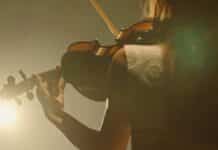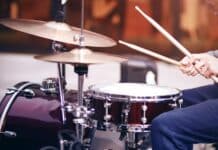Texture in music refers to how individual sounds, or groups of sounds, are layered and combined to create a rich and complex musical experience. In this guide, we’ll delve into the various types of textures, how they’re made, and how they impact the overall experience of listening to a piece of music.
What Is Texture in Music?
Texture, one of the elements of music, is the cumulative effect of its different audio layers interacting. Its many layers of sound represent a composition’s many overlapping elements. Maybe there’s guitar picking, there’s a singer ad-libbing, a group of people as backup singers for the melodic line, or there is a rhythmic accompaniment like a piano in the verses.
Tip: It is entirely up to the composter to determine how well these layered components blend sonically. Keep in mind that texture is the interplay between several layers and harmonies that results in an overall impression.
What Are the Four Main Types of Textures
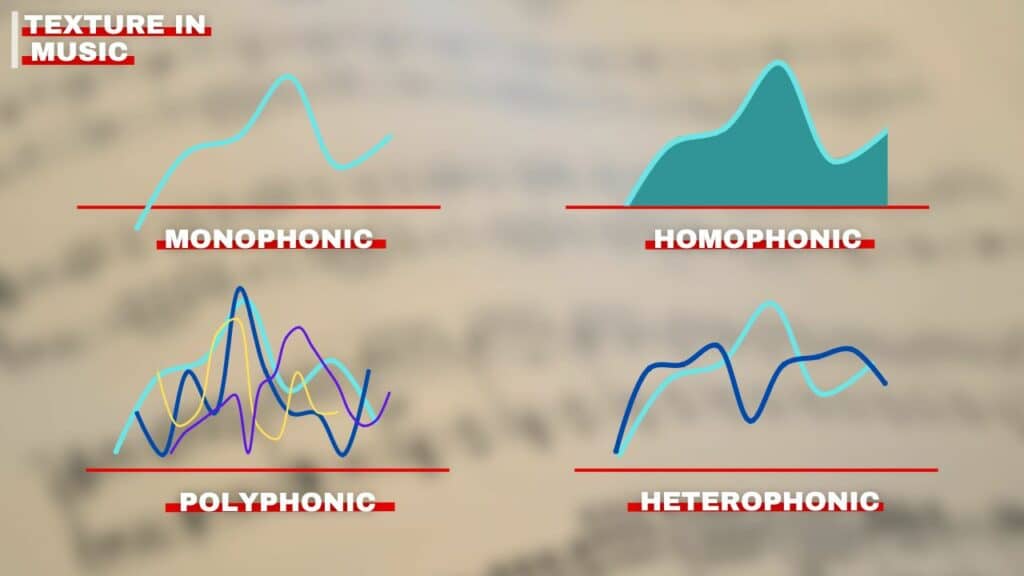
There are many different types of texture, each with a unique character and feel that can greatly impact a piece of music’s character.
Monophony / Monophonic Texture
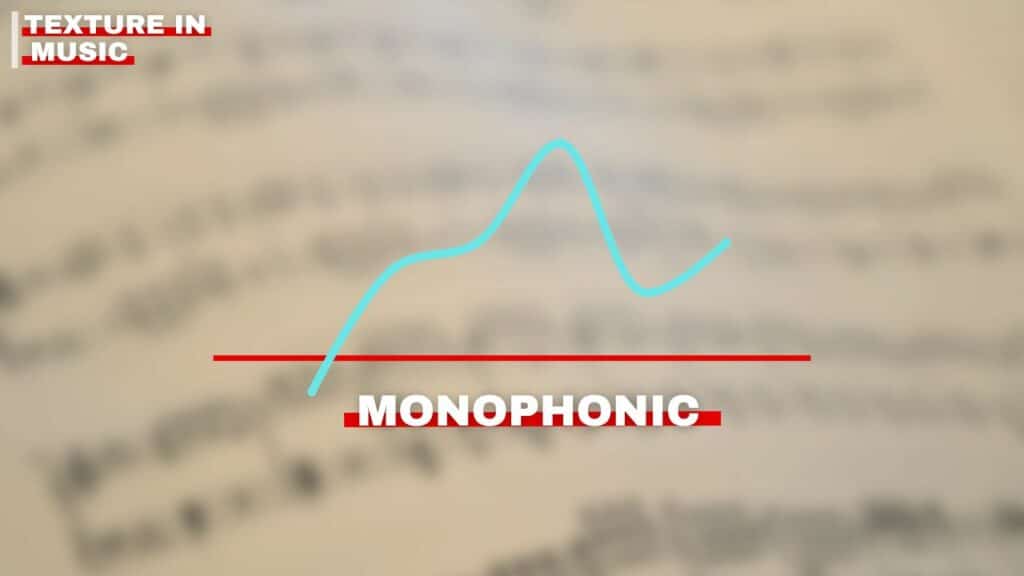
In monophonic music, a single person plays or sings one melody or tune. This solo is free from any harmonic accompaniment. Many simple songs we learn as children are monophonic.
Fun Fact: Monophonic is from the Greek words “mono” and “phonic.” Mono means one, while phonic is “relating to sound.”
If there is an accompaniment like an orchestra, the texture of a piece of music becomes homophony.
Examples of Monophony
- Gregorian chant
- Folk songs
- Solo performance without any accompaniment or ornamentation
- Bagpipe music
- Sports fans chanting in unison
Homophony / Homophonic Texture
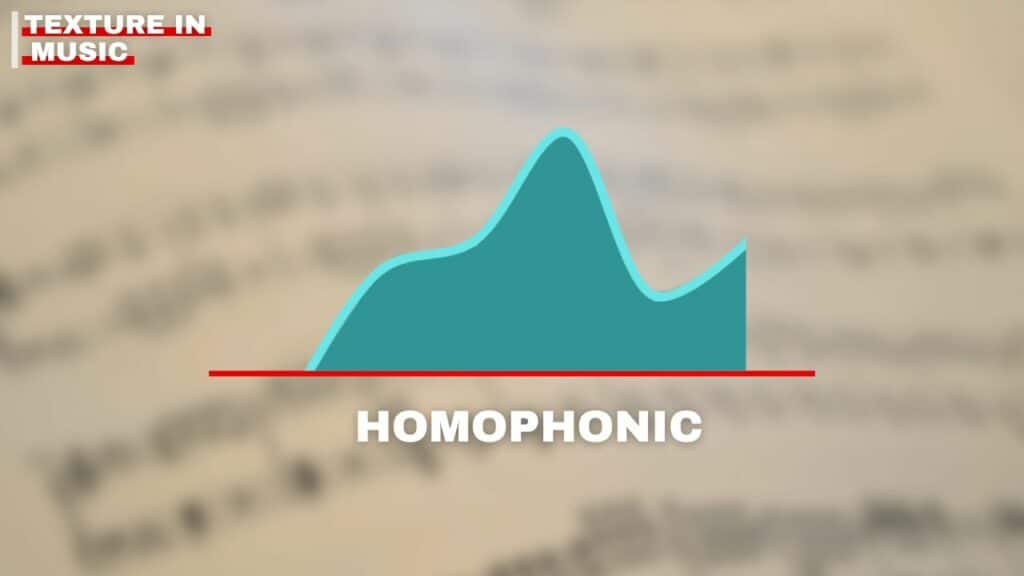
With homophonic music, you’ll have a melody and accompanying instruments. However, they are not independent melodic parts. Instead, they blend as they typically have the same melody. In some cases, the accompaniment can also fill in the harmony. This is evident in well-written homophonies, like choral music or gospel tunes, featuring traditional protestant hymns.
Examples of Homophony
- Maple Leaf Rag
- Seventh Symphony
- Billy Boy
- Big Yellow Taxi
- Ave Maris Stella
Polyphony / Polyphonic Texture
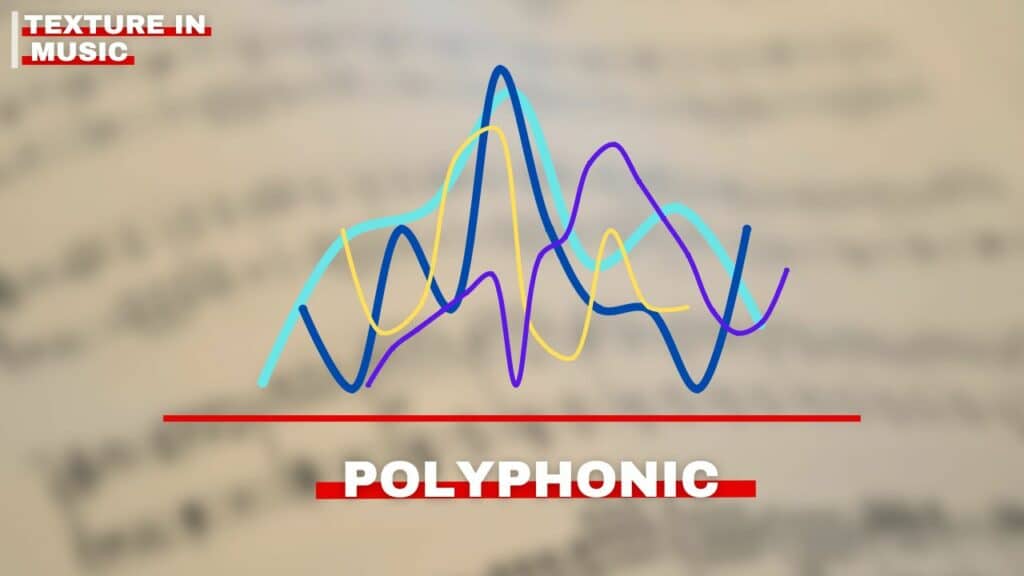
The polyphonic texture describes many harmony possibilities within a single piece. To be considered polyphonic, music must feature two or more melodies. Using counterpoint, or separate but related harmonies and melodies, is vital to polyphonic texture because it adds dimension.
During the Renaissance and Baroque periods, the compositions are predominantly polyphonic.
Fun Fact: The Greek word polyphonic, from which we get the modern word “polyphonic,” combines the concepts of “many” (polu) and “sound” (phone).
A perfect example of polyphony is the refrain part of Beach Boys’ Good Vibration. A more modern example of this texture is the final refrain of Jason Mraz’s “I’m Yours.”
Examples of Polyphonic Music
- Winchester Troper, Verset: Pascha Nostrum – Unknown
- Sumer is icumen in, Reading Abbey
- Sederunt Principes, Pérotin
- The Lion Sleeps Tonight, The Lion King
- Yelli, Baka Women
Heterophony / Heterophonic Texture
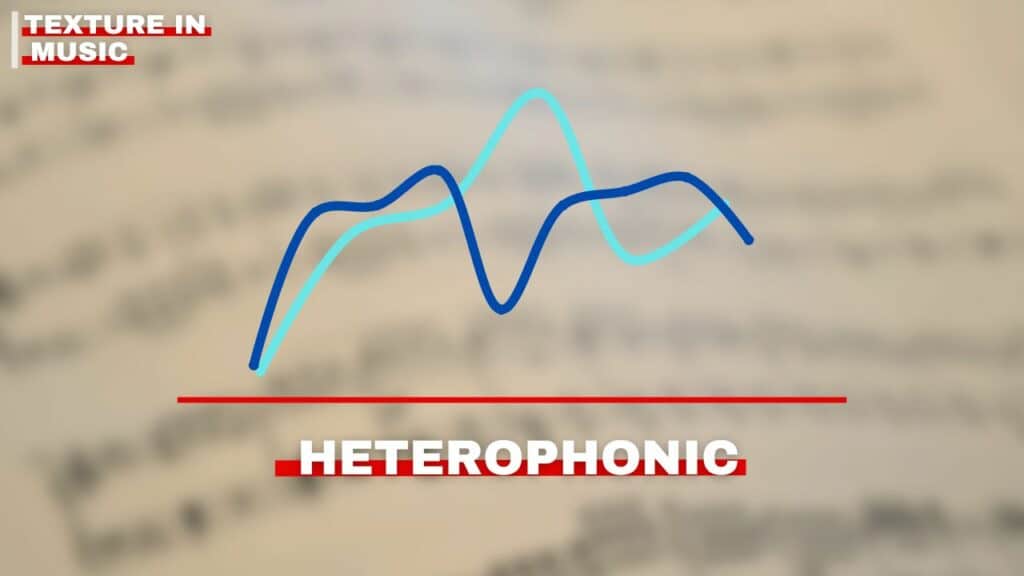
The heterophonic texture is uncommon in Western music. It is a characteristic of various musical styles, including bluegrass, “mountain music,” Cajun, and Zydeco.
Traditional music often has a heterophonic texture as it features a simultaneous performance of a melody by multiple vocalists, instrumentalists, and different embellishments.
Examples of Heterophonic
- Ottoman classical music
- Japanese Gagaku
- Kulintang ensembles of the Philippines
- Gamelan music of Indonesia
Other Types of Textures
In addition to the four textures mentioned above, there are a few other types of textures in music worth exploring. Each of these textures contributes its unique character to the music.
Counterpoint
Counterpoint is a type of musical texture involving multiple independent melodies played simultaneously. In counterpoint, each melody is distinct and has rhythm and melodic shape, yet they are harmonically connected and interwoven to create a unified whole.
Homorhythmic
In homorhythmic textures, rhythm is the dominant factor. However, all parts move together synchronously. It helps establish a strong sense of unity and coherence in a composition.
Melody-Dominated
The melody-dominated texture is a type of texture in music in which the melody is the most prominent and dominant element. In melody-dominated texture, the other musical elements, such as harmony and rhythm, are secondary and support the melody.
Imitation
Imitation is a compositional technique in which a melodic idea is introduced by one voice or instrument and then repeated or “imitated” by another voice or instrument. This creates a sense of musical dialogue between the voices or instruments presenting the same melodic idea.
Melody and Accompaniment Texture
If you can identify the melody and the accompaniment in a piece of music, this type of texture is called melody and accompaniment texture. The melodic line is typically a solo yet prominent voice supported and enhanced by a single instrument or large instrument groups.
Alberti Bass
Alberti Bass, named after the Italian composer and musician Domenico Alberti, is a musical technique used in classical music, especially in piano playing. It is a repeating pattern of broken chords that serves as an accompaniment to a melody. The pattern has a simple, repetitive left-hand figure that moves stepwise while the right hand plays a melody.
The Alberti Bass creates a steady harmonic rhythm in the accompaniment and is commonly used in classical music to add interest and structure to the underlying harmonies.
Drone
A drone is a sustained musical note or chord that serves as a background foundation for a piece of music. The drone creates a stable, unchanging harmonic background against which other musical elements, such as melody, rhythm, and harmony, can be heard.
Drones are present in traditional music, serving as a constant, underlying source of sound and rhythm. In Western classical music, drones are less common, but they have appeared in works by composers such as Arvo Pärt and Henryk Górecki.
Ostinato
Ostinato is a repeating musical phrase or rhythm. The term is from the Italian word “ostinato,” which means “obstinate” or “stubborn.” An ostinato is a short phrase repeated continuously throughout a composition, often in the bass line, providing a steady pulse and adding structure to the music. They also create tension, establish a mood, or drive a piece forward.
Cluster Chords
Cluster chords feature notes that are close together and form a cluster or dense mass of sound. The letters in a cluster chord are often chromatically or semitone-wise adjacent, creating a harmonically complex and often dissonant sound.
In some styles of music, cluster chords express atonality, or the lack of a tonal center, while in others, they add a feeling of dissonance or tension to a piece.
Cluster chords are common in contemporary classical music, experimental music, and some forms of jazz and avant-garde music.
Melody With a Chordal Accompaniment
As its name implies, this texture type features chords accompanying a main song to provide harmonic support and create a certain mood or atmosphere. The chords may be simple or complex and can be played on various instruments, including piano, guitar, or strings.
Many music styles use melody with chordal accompaniment, including classical, folk, pop, and jazz. In some classes, the chords may be written out in advance, while others are improvised on the spot. Regardless of the style, the goal is often to create a rich and expressive musical experience that engages the listener and brings the melody to life.
Table of Contents




